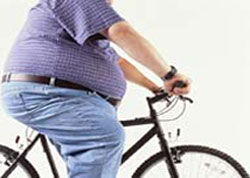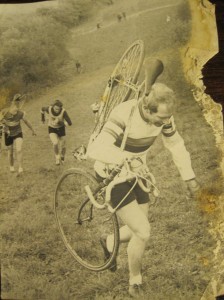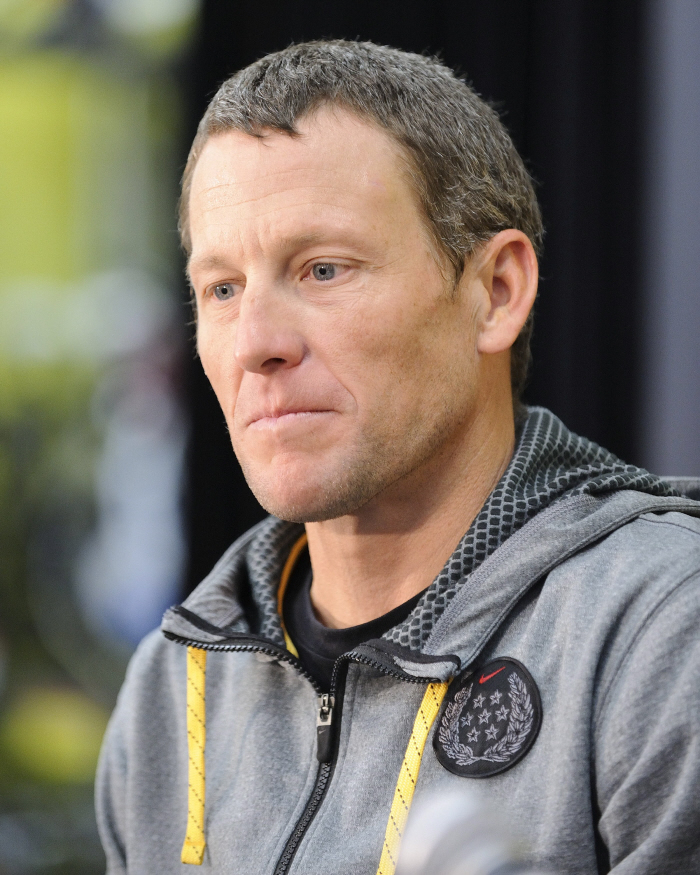 This post is mainly a list of resources, links and quotes about the relationship between fitness, weight and cycling performance. As I have discovered myself, losing weight is the single most effective way to improve performance. I guess this is pretty obvious really. Given the same level of fitness and strength, you will go further, go faster, climb hills more easily if you are not carrying several kilos of lard with you. I am undoubtedly fitter and stronger now than I was 6 months ago. But the improvement in my performance on the road, especially on the climbs, is all about my 2 stone weight loss. I’ve read in several places now that the key to weight loss is calorie reduction and that in most sensible and doable diet/exercise regimes typically 80% of weight loss comes from changes in eating. My experience, so far at least, seems to confirm this.
This post is mainly a list of resources, links and quotes about the relationship between fitness, weight and cycling performance. As I have discovered myself, losing weight is the single most effective way to improve performance. I guess this is pretty obvious really. Given the same level of fitness and strength, you will go further, go faster, climb hills more easily if you are not carrying several kilos of lard with you. I am undoubtedly fitter and stronger now than I was 6 months ago. But the improvement in my performance on the road, especially on the climbs, is all about my 2 stone weight loss. I’ve read in several places now that the key to weight loss is calorie reduction and that in most sensible and doable diet/exercise regimes typically 80% of weight loss comes from changes in eating. My experience, so far at least, seems to confirm this.
The arithmetic is quite simple. One pound of fat stored is 3500 calories. It takes 3500 calories worth of exercise to reduce your fat store by 1 lb. So, taking last November as an example, I burnt about 8000 calories on my bike, on the road and on the turbo. This amount to 2.25 lbs of fat. However I lost 9 lbs that month. So, in a fairly active month, 75% of my weight loss is down to my reduced calorie diet and 25% to cycling. In December I only did 4000 calories worth on the bike and had put 2 lb on by the end of the month. Presumably I’d have put on 3 lb without the exercise. January is looking a lot better and so far I have done 4000 calories worth already with a week to go. So far I have lost a further 4 lbs since New Year, again about 25% down to the exercise.
Hopefully the next stone will come off over the rest of winter and I will be down to under 14 stone 7 lbs by the end of March. If I succeed it will be mainly down to keeping the calories down in my diet. However, come the Spring and Summer, and with the new bike I will buy when I’m down to under 15 stone, there should be a significant increase in my cycling and the 75%/25% ratio between dietary and exercise weight loss should shift significantly in favour of exercise.
———————–
Riding at a moderate speed (12 – 14 mph) you will burn approximately 235 calories per half hour depending on weight but this is about right for turbos and rollers I think.
EFFECTS OF WEIGHT LOSS ON CYCLING PERFORMANCE http://www.livestrong.com/article/337110-effects-of-weight-loss-on-cycling-performance/
Those seeking to attain the proper power-to-weight ratio often follow this rule of thumb, per the Cycling Performance Tips website: The number of pounds you carry should be no more than twice your height in inches.
So, at 6 foot, I need to weigh 10 stone 4 lb!!
Improve Cycling Performance – Optimize Body Weight http://cyclingcommentary.typepad.com/cycling_commentary/2011/01/improve-cycling-performance-optimize-body-weight.html
Losing five kilograms of body weight results in a remarkable 7.7-8% increase in cycling performance. That means that each kilogram of body weight is worth 4.5-5 watts of power. That’s huge, especially if you’re a masters level cyclist and your best VO2 max days are behind you.
Nutrition: Lose the pounds to gain speed and power http://www.bikeradar.com/fitness/article/nutrition-lose-the-pounds-to-gain-speed-and-power-24762/
Wiggins told the London Evening Standard that the weight loss meant he was “carrying the equivalent of six bags of sugar less up a mountain”, adding that 1kg of body weight over a 30-minute climb equals one minute in time……
After checking your body composition you should only aim to shift any excess weight slowly and steadily. “It’s important that weight loss is modest and is no more than approximately 1lb to 2lb per week,” says Gavin Reynoldson, a teaching fellow at the University of Bath’s Department of Sports Development. “This can be achieved by reducing energy intake by about 500Kcal per day. Any more than that will likely result in impaired performance and loss of muscle mass.”
For example, for those with a light training programme (less than an hour a day of low intensity exercise) he advises 5-7g of carbohydrates per kg of body mass per day, but for a cyclist undertaking an extreme exercise programme (more than four to five hours of moderate to high intensity cycling such as a stage race), he advises 10-12g of carbohydrate per kg of body mass per day. In real terms, a piece of bread has approximately 20g of carbohydrate, and 50g of dry-weight rice has about 30g of carbohydrate.
So for me (99 kilos x 6g) this means 594 grams of carbohydrate, equivalent to 30 slices of bread or 20 x 50g portions of rice.
BICYCLING AND WEIGHT CONTROL http://www.cptips.com/weight.htm
Some authors have suggested that riding at slow speeds (<50% VO2 max) is preferred for a weight loss program as more of the Calories expended will be supplied from fat tissue storage at lower levels of exercise. Let’s look at this argument in more detail. If you ride at 65% VO2max, your body’s fat stores will provide about half of your Caloric needs and the other half will come from glycogen reserves. At 85% VO2max, the relative number of Calories supplied from fat fall to about one third of the total number expended with the balance again coming from glycogen reserves. However, if one looks at the absolute numbers, a fit cyclist riding 30 min at 65% VO2max will burn about 220 Calories (110 fat Calories, 110 Calories from carbohydrate or glycogen stores). The same cyclist, riding at 85% VO2max will burn an additional 100 Calories (total of 320 Calories over the 30 minutes), with 110 Calories still coming from fat and the balance of 220 coming from carbohydrates. So even though fat provides a smaller percentage of the total energy needs, the actual number of fat Calories burned during the 30 minutes of exercise remains unchanged.



 The other big happening is the televised confession of Lance Armstrong with Oprah Winfrey. He has admitted to blood doping and using other banned substances for all 7 of his Tour wins and even before his cancer. He said he didn’t think of it as cheating as it was just part of the job, like putting air in your tyres and water in your bottle. He also claimed it was not cheating as it was a level playing field, implying that all his other main opponents were at it too. More will come out as a result of this I’m sure. The interview and confession have had a very mixed response so far. Armstrong wants to be able to return to competition in Iron Man events but he will have to spill a lot more before his lifetime ban is reduced. Nicole Cooke’s take on Armstrong is powerfully expressed in her
The other big happening is the televised confession of Lance Armstrong with Oprah Winfrey. He has admitted to blood doping and using other banned substances for all 7 of his Tour wins and even before his cancer. He said he didn’t think of it as cheating as it was just part of the job, like putting air in your tyres and water in your bottle. He also claimed it was not cheating as it was a level playing field, implying that all his other main opponents were at it too. More will come out as a result of this I’m sure. The interview and confession have had a very mixed response so far. Armstrong wants to be able to return to competition in Iron Man events but he will have to spill a lot more before his lifetime ban is reduced. Nicole Cooke’s take on Armstrong is powerfully expressed in her